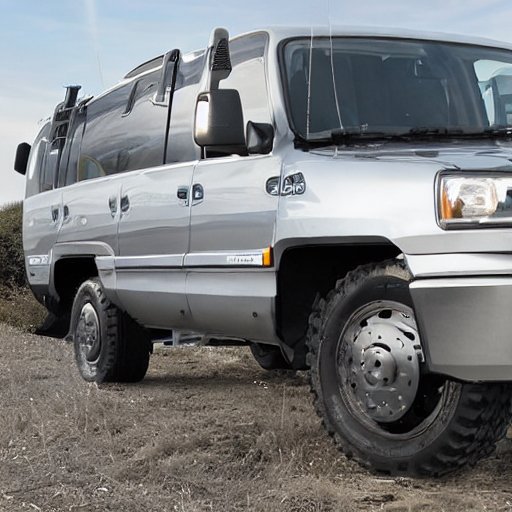Hey there, Matthew here! Today I want to talk about a topic that’s crucial for anyone who owns a vehicle: what percentage of GVWR is safe.
Now, I know this might not sound like the most exciting topic in the world, but trust me – it’s important!.
Let me start off by sharing a personal story with you.
One time, I was driving my buddy’s truck and we were headed to a tailgate party.
We had a ton of stuff in the back of the truck – coolers, chairs, a grill, you name it.
I didn’t really think about the weight distribution or anything like that – I just figured the truck could handle it.
Well, let’s just say things didn’t go according to plan.
As we were driving down the highway, I hit a bump and the truck started to fishtail.
It was a scary experience, and I’m lucky we didn’t get into an accident.
But it taught me an important lesson about the importance of understanding your vehicle’s weight capacity.
So, what percentage of GVWR is safe?
Let’s start with some definitions.
GVWR stands for Gross Vehicle Weight Rating.
It’s the maximum weight that a vehicle is designed to carry, including passengers, cargo, and fuel.
The percentage of GVWR that’s safe depends on a few different factors, including the vehicle’s make and model, as well as the weight of the items you’re carrying.
Table of Contents
The Importance of Knowing Your Vehicle’s GVWR
So, why is it so important to know your vehicle’s GVWR? Well, for one thing, exceeding your vehicle’s weight limit can be dangerous.
When a vehicle is overloaded, it can be more difficult to control and can take longer to stop.
This can increase your risk of getting into an accident.
Additionally, overloading your vehicle can cause damage to the tires, brakes, suspension, and other components.
This can lead to costly repairs down the line, and it can also decrease your vehicle’s lifespan.
Calculating Your Vehicle’s Safe Payload Capacity
So, how do you know what percentage of GVWR is safe for your vehicle? The first step is to find out your vehicle’s GVWR.
You can usually find this information in the owner’s manual, or you can look it up online.
Once you know your vehicle’s GVWR, you can subtract the weight of the vehicle itself, as well as the weight of any passengers and fuel.
This will give you your vehicle’s payload capacity – the amount of weight you can safely carry in the cargo area.
Keep in mind that your payload capacity will also depend on the weight distribution of the items you’re carrying.
For example, if you have a heavy item that’s all the way at the back of the cargo area, this can put extra weight on the rear axle and decrease your vehicle’s stability.
My Experience with Overloading a Vehicle
As I mentioned earlier, I had a scary experience with overloading a vehicle.
It was a wake-up call for me, and it made me realize just how important it is to pay attention to weight limits.
Since then, I’ve made a point to always check the GVWR of any vehicle I’m driving, and to make sure I’m not overloading it.
Tips for Staying Safe on the Road
Now that you understand the importance of knowing your vehicle’s GVWR and how to calculate your safe payload capacity, let’s talk about some tips for staying safe on the road.
- Always check your vehicle’s GVWR before loading it up with cargo. This information can usually be found in the owner’s manual or online.
- Be mindful of the weight distribution of your cargo. Try to evenly distribute the weight throughout the vehicle and avoid putting too much weight on one side or the other.
- Consider investing in a weight distribution hitch or sway control device if you’re towing a trailer. These can help distribute the weight more evenly and improve stability on the road.
- If you’re unsure whether your vehicle can handle a certain amount of weight, err on the side of caution and don’t overload it.
- Regularly maintain your vehicle’s tires, brakes, suspension, and other components to ensure they’re in good condition and can handle the weight you’re carrying.
Remember, exceeding your vehicle’s weight limit can be dangerous and can lead to costly repairs down the line. So, be sure to always pay attention to your vehicle’s weight capacity and stay safe on the road.
Frequently Asked Questions
What happens if I exceed my vehicle’s GVWR?
Exceeding your vehicle’s GVWR can be dangerous. It can make your vehicle more difficult to control and take longer to stop, increasing your risk of getting into an accident.
It can also cause damage to your vehicle’s tires, brakes, suspension, and other components, which can lead to costly repairs down the line and decrease your vehicle’s lifespan.
How can I find my vehicle’s GVWR?
You can usually find your vehicle’s GVWR in the owner’s manual or by searching online. If you’re having trouble finding it, you can also contact the manufacturer or a qualified mechanic for assistance.
What should I do if I need to carry more weight than my vehicle’s GVWR?
If you need to carry more weight than your vehicle’s GVWR, consider using a trailer or renting a larger vehicle. It’s not worth risking your safety or damaging your vehicle to exceed its weight limit.
What are some other tips for staying safe on the road?
In addition to paying attention to your vehicle’s weight capacity, there are several other things you can do to stay safe on the road.
Always wear your seatbelt, follow posted speed limits and traffic signals, and avoid distracted driving. It’s also a good idea to get regular maintenance and inspections for your vehicle to ensure that it’s in good working order.
